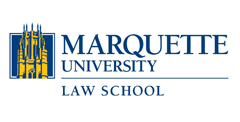Abstract
In 2014, Elon Musk, the renowned and socially-minded CEO of Tesla Motors, Inc., posted a blog on Tesla’s website that stated the company would be freeing up many of its patents involved in the creation of the company’s electric cars to any interested party. Yet again, Musk astounded the public by choosing the betterment of society over corporate profits—stirring up a more positive image than any other corporate personality. But there are numerous questions that Musk’s positive PR have drowned out: Where can you access the patents?; How did freeing up the patents get past the other executive officers and the shareholders?; and Why even free up the patents in the first place? The last question has the easiest answer on its face: for the betterment of mankind. However, such an answer is doubtful to have swayed an entire board of directors as well as any shareholder, and Tesla is not well known for turning a profit. Tesla giving up its patents does not appear to be a reasonable business decision, unless there was an ulterior motive for doing so; say, it would be reasonable if Tesla did so to protect itself from something else.
Indeed, by freeing up its patents, Tesla is able to avoid liability for possible antitrust accusations down the line. How it manages to do this is not entirely clear and may end up causing Tesla more headaches down the road, but one avenue to this current situation, known as a “dedicat[ion] to the public,” is found within the Patent Act.4 Located within the current section 253(b), dedications to the public allow a patent-holder to relinquish their rights in a patent in order to allow any third-party to utilize said patent and to avoid any potential liability from having rights in the same. Doing so grants protections to both patentees and patent-holders and may be considered to expand the prior art for the betterment of all, dependent on your point of view. Regardless, section 253(b) is one possible avenue that Tesla may have taken to give up its patents under the guise of benevolence.
Again, there are the problems with gaining the votes of the board of directors and keeping shareholders happy. In comes section 253(b), which, instead of being used simply out of the goodness of a patent-holder’s heart, may be used as a defense against antitrust prosecution. How a dedication to the public can be used to prevent antitrust adjudication is not immediately clear from the language of the statute, and unfortunately, there is no case law that outlines how section 253(b) can be used to protect a patent-holder. Instead, legislative intent is the lens through which we can determine the true purpose of section 253(b) and dedication to the public at its inception. Additionally, with the incredible expansion of many companies and embrace of vertical integration tactics, a discussion of the shift from section 253(b)’s shift from being an antitrust shield to an antitrust weapon for the benefit of a plaintiff is relevant to show how dedication to the public should become more relevant moving forward.
This comment will discuss these topics, beginning with an examination of the language of the subsection as well as its changes through an examination of legislative history. Part I will also include the historical relevance of the antitrust discussion going on during the section’s birth. Next, Part II will discuss how section 253(b) is used as an antitrust shield and whether it should shift to become an antitrust remedy for plaintiffs instead. In that vein, Part II will also discuss the current state of patent monopolies and the context of contemporary society in determining the necessities of a legal shift.
Repository Citation
Matthew Gagnier,
The Mystery of Section 253(b),
22 Marq. Intellectual Property L. Rev. 151
(2018).
Available at: https://scholarship.law.marquette.edu/iplr/vol22/iss1/9
Included in
Antitrust and Trade Regulation Commons, Business Organizations Law Commons, Intellectual Property Law Commons, Science and Technology Law Commons
